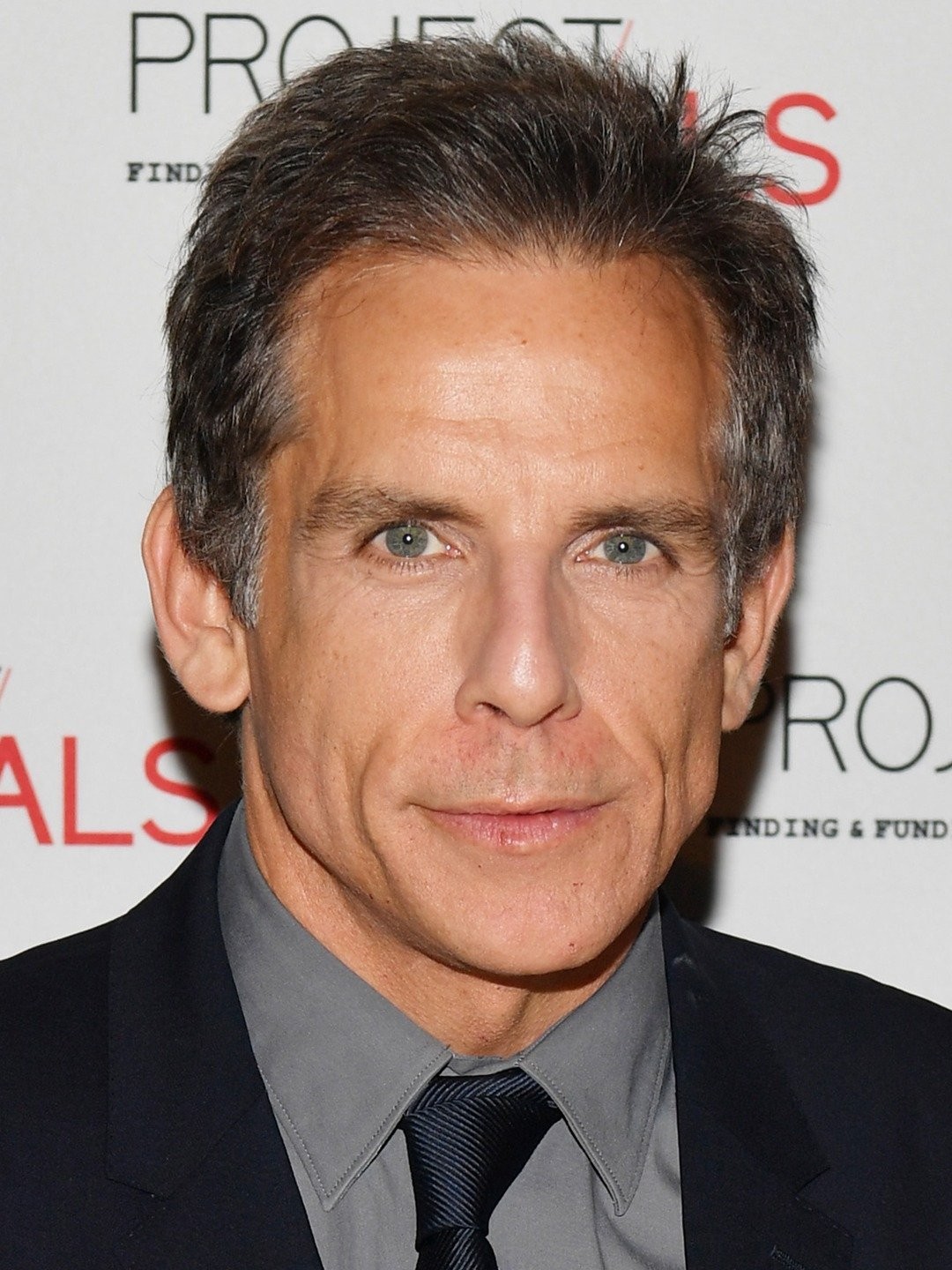Ben Stiller And Noonan Syndrome: The Untold Story
Ben Stiller is one of Hollywood's most beloved comedians, but did you know he's also a Noonan Syndrome advocate? This rare genetic disorder has become a significant part of his life, both personally and professionally. As we dive deeper into this topic, you'll discover how Ben's journey with Noonan Syndrome has shaped his career and inspired countless others. So, grab your favorite drink, and let's unravel the truth behind Ben Stiller and Noonan Syndrome.
When people think of Ben Stiller, they often picture his hilarious roles in movies like "Zoolander" or "Tropic Thunder." However, there's another side to this talented actor that many don't know about. Ben has been open about his connection to Noonan Syndrome, a genetic condition that affects thousands of people worldwide. Through his work and advocacy, he's bringing much-needed attention to this often-overlooked disorder.
As we explore the world of Noonan Syndrome through Ben Stiller's lens, we'll uncover how this condition has influenced his life and career. From his early days in show business to his current status as a respected actor and producer, Ben's journey is nothing short of inspiring. So, let's take a closer look at the man behind the mask and the cause that's close to his heart.
Read also:Nicole Kidmans Earlobes The Story Behind The Hype
Understanding Noonan Syndrome
What Is Noonan Syndrome?
Noonan Syndrome is a genetic disorder that affects about 1 in 2,000 people worldwide. It's characterized by distinctive facial features, short stature, heart defects, and other physical abnormalities. Although it's relatively rare, Noonan Syndrome can have a significant impact on those who live with it. Symptoms can vary widely, making each person's experience unique.
Some of the most common features of Noonan Syndrome include:
- Wide-set eyes with drooping eyelids
- Low-set or rotated ears
- Webbed neck
- Heart defects such as pulmonic stenosis or hypertrophic cardiomyopathy
- Short stature
While these symptoms can be challenging, many people with Noonan Syndrome lead fulfilling lives with proper medical care and support.
Ben Stiller's Connection to Noonan Syndrome
Ben's Journey with Noonan Syndrome
Ben Stiller's connection to Noonan Syndrome began when he discovered that his younger brother, Brett Stiller, was diagnosed with the condition. This revelation opened his eyes to the challenges faced by individuals with Noonan Syndrome and inspired him to become an advocate for the cause. Through his work with organizations like the Noonan Syndrome Foundation, Ben has helped raise awareness and funds for research and support.
In interviews, Ben has spoken candidly about his brother's experience with Noonan Syndrome and how it has influenced his own life. He credits Brett's resilience and determination as a major source of inspiration for his career and personal growth. As Ben once said, "Brett taught me that no matter what challenges you face, you can still achieve great things with the right mindset and support system."
The Impact of Noonan Syndrome on Families
Challenges Faced by Families
Raising a child with Noonan Syndrome can be both rewarding and challenging. Families often face medical, educational, and emotional hurdles as they navigate the complexities of the condition. From frequent doctor visits to specialized educational programs, the needs of a child with Noonan Syndrome can be extensive. However, many families find strength in their shared experiences and the support of communities like the Noonan Syndrome Foundation.
Read also:Jessie Holmes Wife The Untold Story Of Love Life And Success
One of the biggest challenges for families is ensuring that their child receives the proper medical care. Heart defects are common in individuals with Noonan Syndrome, requiring regular monitoring and, in some cases, surgery. Additionally, growth hormone therapy may be necessary to address short stature. Despite these challenges, many families report that their child's diagnosis has brought them closer together and taught them valuable lessons about resilience and adaptability.
Advancements in Noonan Syndrome Research
Current Research and Treatments
Thanks to the efforts of researchers and advocates like Ben Stiller, significant progress has been made in understanding and treating Noonan Syndrome. Recent studies have identified several genes associated with the condition, paving the way for targeted therapies and interventions. Additionally, advancements in medical technology have improved the diagnosis and management of heart defects and other complications.
Some of the most promising developments in Noonan Syndrome research include:
- Gene therapy targeting the PTPN11 gene
- Improved diagnostic tools for early detection
- Personalized treatment plans based on individual genetic profiles
While there's still much work to be done, these advancements offer hope for individuals and families affected by Noonan Syndrome.
Ben Stiller's Advocacy Work
How Ben Is Making a Difference
As a prominent figure in Hollywood, Ben Stiller has used his platform to raise awareness about Noonan Syndrome and support research efforts. Through partnerships with organizations like the Noonan Syndrome Foundation and the Children's Hospital Los Angeles, Ben has helped fund groundbreaking studies and provide resources for families in need. His dedication to the cause has earned him widespread praise and admiration from both the medical community and his fans.
One of Ben's most notable contributions to the cause was his involvement in the "Noonan Syndrome Awareness Day" campaign. This annual event aims to educate the public about the condition and celebrate the achievements of individuals with Noonan Syndrome. By participating in events like these, Ben continues to make a lasting impact on the lives of those affected by the disorder.
Living with Noonan Syndrome
Stories of Hope and Resilience
While Noonan Syndrome presents unique challenges, many individuals with the condition lead fulfilling and successful lives. From accomplished athletes to talented artists, people with Noonan Syndrome prove that the disorder doesn't define them. Their stories of hope and resilience serve as powerful reminders of the human spirit's strength and determination.
Take, for example, the story of Sarah Johnson, a young woman with Noonan Syndrome who became a professional photographer despite facing numerous obstacles. Sarah's journey from a shy teenager to a confident artist demonstrates the importance of self-belief and perseverance. As she puts it, "Noonan Syndrome may have shaped my life, but it hasn't stopped me from achieving my dreams."
Supporting Individuals with Noonan Syndrome
Resources and Organizations
For families and individuals affected by Noonan Syndrome, there are numerous resources available to help them navigate the challenges of the condition. Organizations like the Noonan Syndrome Foundation and the Noonan Syndrome Support Group offer a wealth of information, support, and community for those in need. Additionally, many hospitals and clinics have specialized programs dedicated to treating Noonan Syndrome and its associated complications.
Some of the most helpful resources for individuals with Noonan Syndrome include:
- Noonan Syndrome Foundation – Provides education, advocacy, and support for families
- Children's Hospital Los Angeles – Offers comprehensive care for children with Noonan Syndrome
- Noonan Syndrome Support Group – Connects families and individuals for peer support and networking
By utilizing these resources, families can ensure that their loved ones receive the best possible care and support.
The Future of Noonan Syndrome Research
What Lies Ahead
As research into Noonan Syndrome continues to advance, the future looks bright for individuals and families affected by the condition. With breakthroughs in gene therapy and personalized medicine, scientists are closer than ever to developing effective treatments and interventions. Additionally, increased awareness and advocacy efforts are helping to break down barriers and improve access to care for those in need.
While there's still much work to be done, the progress made in recent years offers hope for a brighter future for individuals with Noonan Syndrome. As Ben Stiller once said, "Every step forward brings us closer to a world where everyone, regardless of their condition, can live a full and meaningful life."
Conclusion: Embracing the Journey
Throughout this article, we've explored the world of Noonan Syndrome through the lens of Ben Stiller's experiences and advocacy. From understanding the condition's symptoms and challenges to celebrating the achievements of those who live with it, we've uncovered a story of hope, resilience, and determination. As we move forward, it's essential to continue supporting research efforts and raising awareness about this often-overlooked disorder.
So, what can you do to help? Start by sharing this article with your friends and family to spread the word about Noonan Syndrome. Consider supporting organizations like the Noonan Syndrome Foundation or participating in events like Noonan Syndrome Awareness Day. Together, we can make a difference in the lives of individuals and families affected by this condition.
Remember, every small action counts, and even the simplest gesture can have a profound impact. As Ben Stiller has shown us, embracing the journey and supporting one another can lead to incredible achievements and a brighter future for all.
Table of Contents
- Understanding Noonan Syndrome
- Ben Stiller's Connection to Noonan Syndrome
- The Impact of Noonan Syndrome on Families
- Advancements in Noonan Syndrome Research
- Ben Stiller's Advocacy Work
- Living with Noonan Syndrome
- Supporting Individuals with Noonan Syndrome
- The Future of Noonan Syndrome Research
- Conclusion: Embracing the Journey



